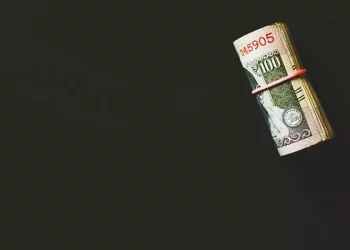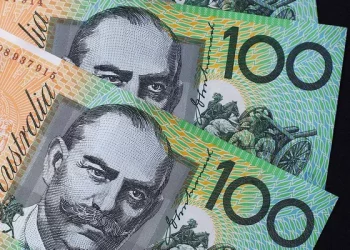Thailand, known for its vibrant culture and rich heritage, uses the Thai Baht (THB) as its official currency. Among the various denominations available, the 50 baht note often raises curiosity for both locals and tourists alike. Whether due to its availability, design, or utility, people frequently question its existence and purpose. This guide seeks to offer a clear, comprehensive answer to the question: is there a 50 baht note in circulation today? By the end of this article, readers will have a detailed understanding of the 50 baht note, including its design features, historical context, current use, and tips for identification.
1. Overview of Thai Currency
Thailand’s currency system consists of both coins and banknotes. The Thai Baht is subdivided into 100 satang, and its denominations include coins of 25 and 50 satang, and 1, 2, 5, and 10 baht. Banknotes are issued in denominations of 20, 50, 100, 500, and 1,000 baht. Each denomination serves a unique function within daily transactions. Lower denominations are used for everyday purchases, while higher denominations cater to more substantial payments. The 50 baht note fits neatly within this spectrum, offering convenience for medium-value transactions. It is commonly used in markets, transportation, and general retail.
2. The Existence of the 50 Baht Note
To address the core question—yes, there is a 50 baht note in Thailand. It is a legal tender and continues to be printed and circulated by the Bank of Thailand. It plays a significant role in daily financial transactions and is widely accepted across the country. The note has undergone several redesigns and security updates over the years, reflecting changes in technology and design philosophy. Its presence in the currency system is both functional and practical, making it a vital component of the Thai monetary structure.
3. Historical Development of the 50 Baht Note
The 50 baht note has a rich history that dates back several decades. Initially introduced to fill a gap between the 20 and 100 baht notes, it became a preferred denomination for many everyday transactions. Over time, the note has seen various design iterations, each reflecting the reigning monarch and incorporating new security features. For example, early designs featured King Bhumibol Adulyadej, while current notes often depict King Maha Vajiralongkorn. The colors, motifs, and materials have also evolved, enhancing both durability and security.
Key Milestones:
- First Issuance: Early versions date back to the mid-20th century.
- Design Updates: Periodic updates have modernized the note’s appearance.
- Security Enhancements: Advanced printing techniques have been employed to prevent counterfeiting.
4. Design and Physical Features
The 50 baht note is easily recognizable due to its distinct blue color. It is made from high-quality paper or polymer (depending on the series) and contains numerous security features. These include watermarks, embedded threads, color-shifting ink, and microtext. The design generally features a portrait of the reigning king on the front and a significant cultural or historical image on the back. These features not only enhance the aesthetic value but also serve to deter counterfeiters.
Common Features:
- Color: Blue
- Size: Slightly smaller than the 100 baht note
- Security: Watermark, security thread, color-shifting ink
- Front Design: King’s portrait
- Back Design: Historical themes or national achievements
5. Polymer vs. Paper Versions
In recent years, the Bank of Thailand has adopted polymer substrates for certain denominations, including the 50 baht note. Polymer notes are more durable, resistant to moisture and dirt, and have a longer lifespan than paper notes. This shift also enables the integration of more sophisticated security features. However, paper versions are still in circulation and are equally valid. The transition is gradual and aims to modernize the currency system.
Pros of Polymer:
- Increased durability
- Enhanced security
- Eco-friendly in the long term
Cons:
- Slightly higher production cost
- Different tactile feel which may take time to get used to
6. Circulation and Usage
The 50 baht note is widely used throughout Thailand and can be found in ATMs, banks, and retail outlets. Its utility spans various sectors, including transportation (such as BTS tickets and taxis), dining (small eateries), and shopping (convenience stores). Its availability is generally consistent, although supply may fluctuate slightly based on regional demands or seasonal economic activities.
Where You’ll Commonly Use It:
- Public transportation
- Small retail stores
- Local markets
- Street vendors
7. How to Identify a Genuine 50 Baht Note
Given the sophistication of modern counterfeit methods, knowing how to identify an authentic 50 baht note is essential. Thai banknotes, including the 50 baht note, incorporate several security elements designed to make replication extremely difficult. Familiarity with these elements helps consumers, especially foreigners, avoid being duped.
Tips for Identification:
- Watermark: Hold the note to the light to see the watermark.
- Security Thread: A vertical thread embedded within the note.
- Color Shifting Ink: Tilt the note to observe changes in ink color.
- Tactile Marks: Raised print can be felt by running fingers over the note.
- Microtext: Tiny, detailed text that is difficult to duplicate.
8. Collectibility and Special Editions
Occasionally, the Bank of Thailand releases commemorative editions of the 50 baht note. These are usually issued to mark significant national events, royal milestones, or anniversaries. Such notes often feature unique designs, colors, and enhanced features. While they remain legal tender, many people keep them as collectibles due to their limited issuance and aesthetic value.
Examples of Special Editions:
- Commemorating royal birthdays
- Celebrating historical anniversaries
- Honoring national achievements
9. Role in the Thai Economy
The 50 baht note plays a vital role in maintaining the fluidity of cash transactions within Thailand. It serves as a convenient denomination for both consumers and businesses, easing the process of making exact payments and providing change. Its role becomes even more pronounced in rural areas and among informal sector vendors, where card-based payments are less prevalent. As Thailand continues to modernize its financial systems, the 50 baht note remains a key facilitator of everyday commerce.
Conclusion
To summarize, the 50 baht note is very much real and an integral part of Thailand’s currency system. Its history, design evolution, and practical utility underscore its importance in everyday life. Whether made from paper or polymer, adorned with royal portraits or commemorative designs, the 50 baht note is a valued and reliable medium of exchange. Understanding its features and role not only aids in financial transactions but also offers insight into Thailand’s cultural and economic landscape. So next time you visit Thailand or handle its currency, you can confidently recognize and appreciate the 50 baht note for what it truly is—a small but significant piece of Thai heritage and monetary practice.
Related Topics:

























